Automation: Is It The Only Way For IT To Really “Do More With Less”?
The changing business and IT landscapes bring increased demand for IT (or IT services) AND increasing complexity. The slide below (a tweaked version of a genuine Glenn O’Donnell original) paints a picture of increasing complexity and an impending capability gulf; if it isn’t already here.
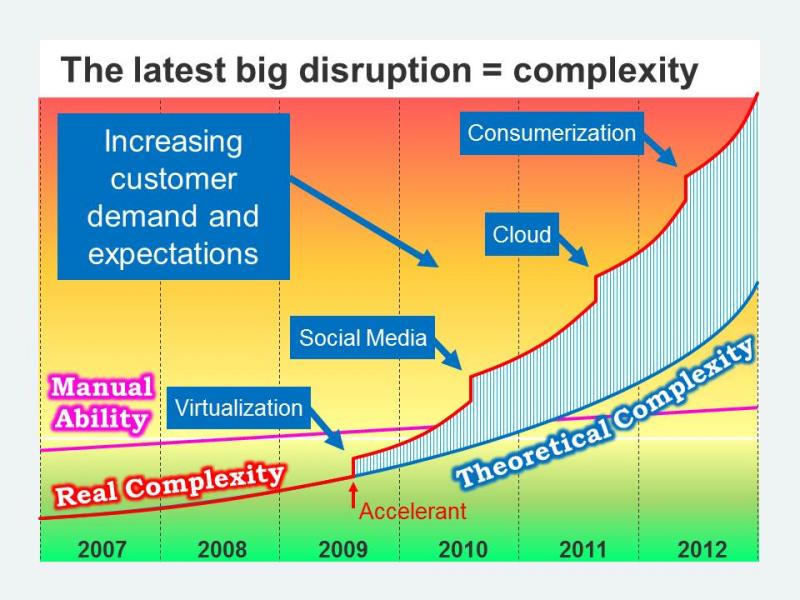
So can IT organizations cope by increasing their manual ability, usually by employing or buying in more people resource?
Even if they could get suitable resource (availability and recruitment can be issues), could the parent business afford the jump in labor costs as these continue to be a highly-visible element of overall IT service delivery costs? Adding more people doesn’t necessarily fit in with the now oft-quoted mantra of “do (or deliver) more with less.”
A recent webinar with ServiceNow looked at drivers for and opportunities from automation, and how to approach building the business case for service management AND automation. Where Forrester defines automation as:
“Tools that perform functions otherwise done by humans.”
If you want to cut to the chase (i.e. don’t want to read the blog) …
… Then the on demand webinar can be found here: http://info.
If you just want to flick through the slides, they are here: http://www.slideshare.
But if you are sitting comfortably I will continue …
While many are worried about the “rise of the machines” that is automation, let us not forget that our existing investments in IT service management (ITSM) tools, as well as the more obvious data center scheduling tools, are already an “investment in automation.” Many IT organizations could not efficiently and effectively operate the most basic of ITSM processes such as incident management without the enablement of the corporate ITSM tool by way of automated routing and workflow, alerts and escalations, and automated methods for resolution or provisioning. But we need to look at automation as more than “a good thing to do” or the next piece of sexy technology to play with.
Additionally, cloud computing and DevOps are accelerating the evolution of automation-enabled service management, with ITSM itself evolving to adapt to automation. One could argue that there is a symbiotic relationship between these movements – that neither cloud computing nor DevOps is truly feasible without extreme automation, and automation needs the economic force of movements like cloud and DevOps to compel the market investment necessary to deliver capable technology solutions. It's becoming increasingly obvious that going forward ITSM in any form will be impossible without significant improvements in automation.
If you want more on the generic benefits of service management and automation, please take a look at: http://blogs.forrester.com/stephen_mann/12-06-21-it_service_management_and_automation_now_thats_a_double_whammy_of_business_enabling_goodness
So what did I recommend to those looking to justify service management and automation?
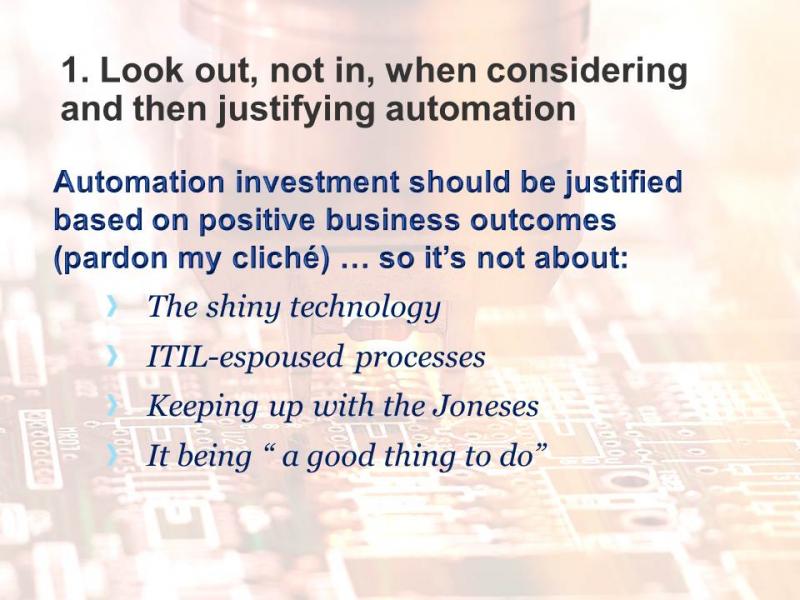
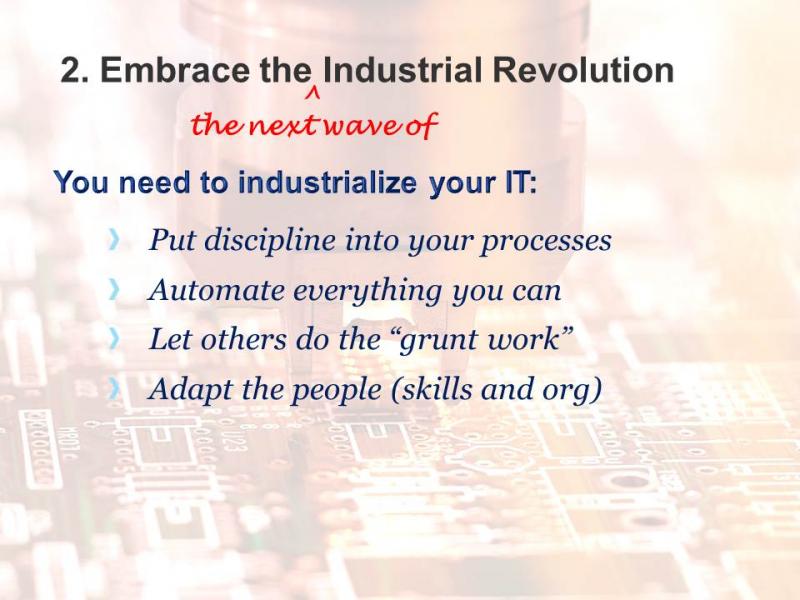
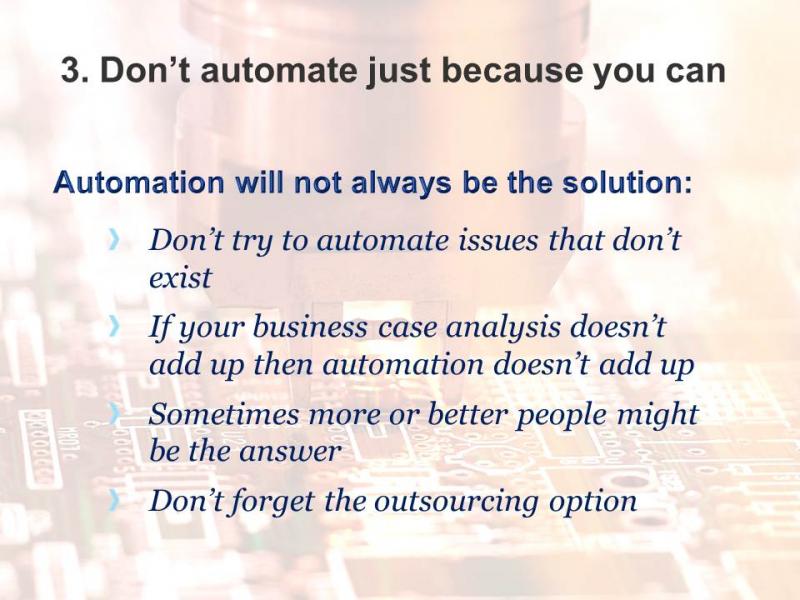
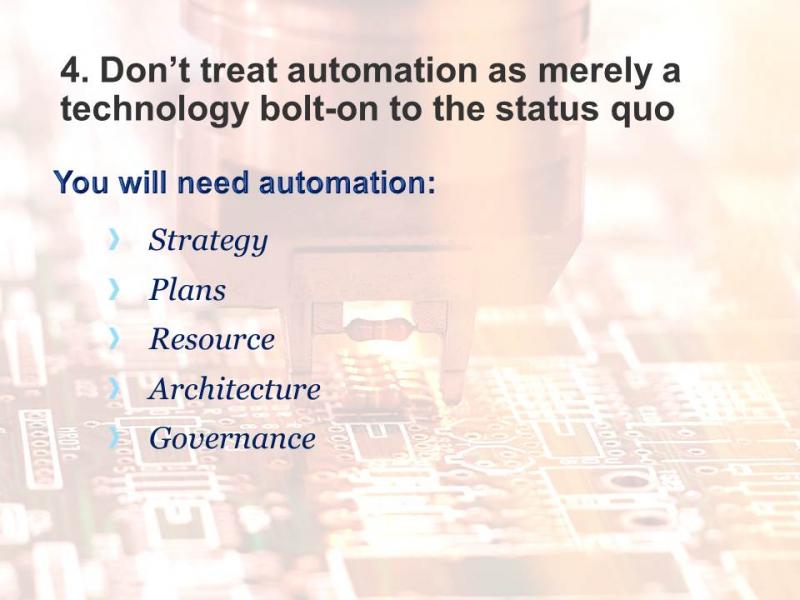

Sorry, but if you want to know more you will need to refer to one of the earlier options (either watch the webinar or skim through the slides) or look at the further reading references below. And don't get me wrong, I have always believed and continue to believe that IT is all about people and relationships. This is about making better use of scarce people resource not ripping great people out of the IT service delivery ecosystem.
As always your opinions and feedback are welcome. I’ll leave you with the words of Glenn O’Donnell:
“Be The Automator Not The Automated”
And that additional reading …
Forrester Reports Available via ServiceNow (sign up required)
- Deliver Technology Services Faster, Cheaper, And Better http://info.servicenow.com/LP=934
- Sustain Service Management And Automation Funding http://info.servicenow.com/LP=1097
Forrester Blogs
- Prepare Your People For The Future Of IT Service Delivery http://blogs.forrester.com/stephen_mann/12-08-13-prepare_your_people_for_the_future_of_it_service_delivery
- What's Your IT Service Management Strategy? http://blogs.forrester.com/stephen_mann/12-08-20-whats_your_it_service_management_strategy_if_you_actually_have_one
- Staffing For IT Service Delivery Success http://blogs.forrester.com/stephen_mann/12-08-29-staffing_for_it_service_delivery_success_think_employee_think_customer_then_repeat
Forrester client-only content
- The Service Management And Automation Playbook www.forrester.com/home#/The+Service+Management+And+Automation+Playbook/-/E-PLA105